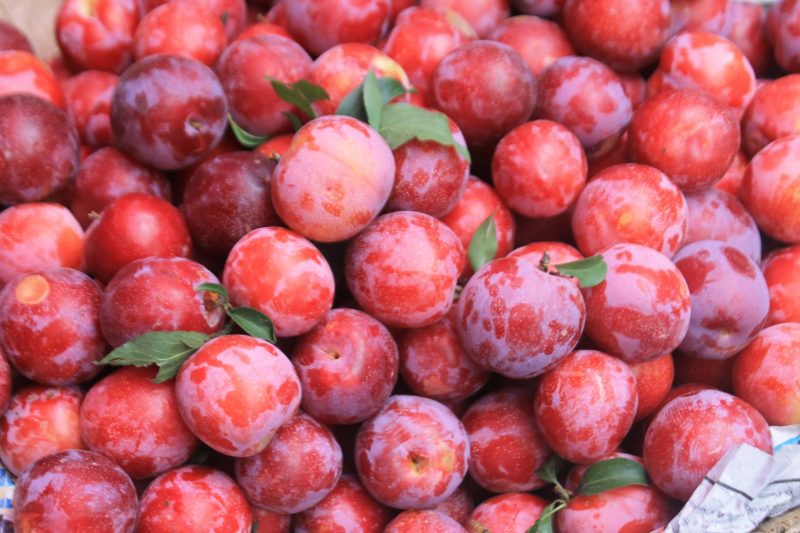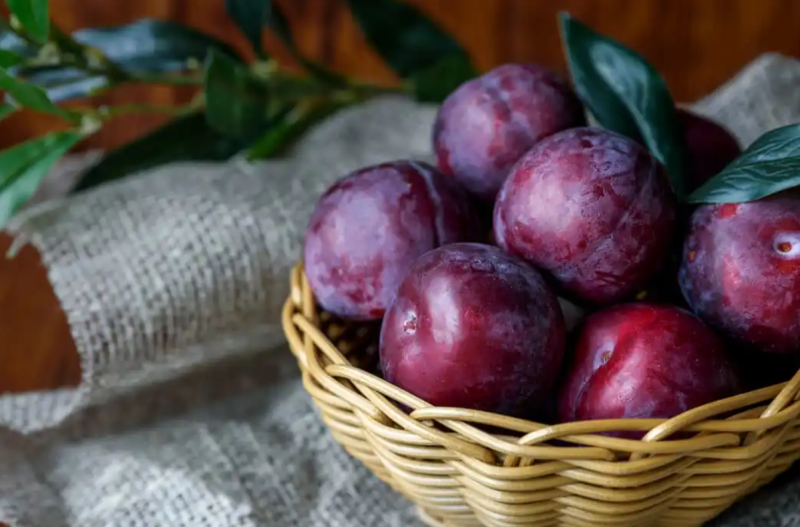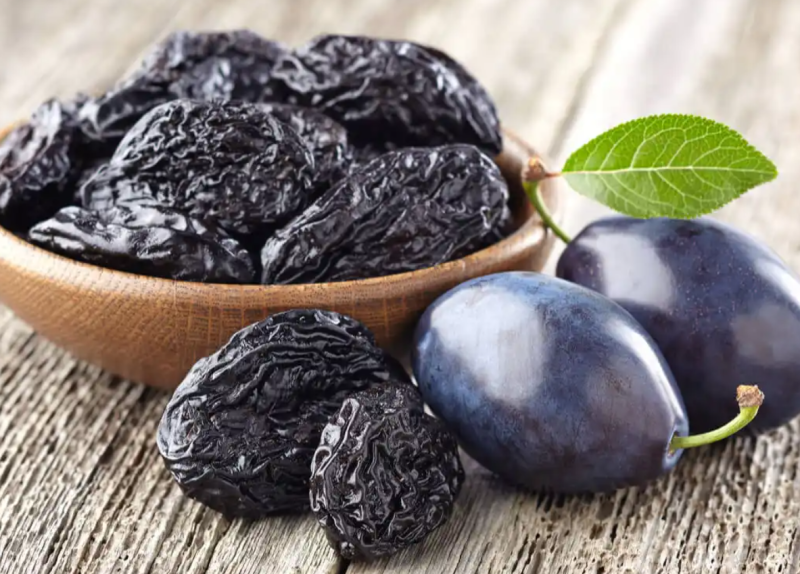
Do you recognize what varieties of plums exist? Although most people have ever eaten this fruit, not everyone knows the specific differences that each type presents. Therefore, we will tell you more about this topic in this article.
Plum is a fruit that has a particular flavor; It can be sweet or have a significant degree of acidity. For this reason, some are fans of it. In addition, there are beneficial nutrients for the body, such as fiber, vitamins A, C, and E, and minerals such as magnesium, zinc, and selenium.
Contents
Plum tree
It is generally 5-6 meters tall and has some species’ smooth-looking or cracked trunk and thorny branches. In addition, its leaves are elliptical with serrated edges and white flowers with buds that are rough to the touch. A point to note is that it can resist low and frost temperatures.
The fruits produced by this tree can be yellow, purple, red, white, or green. Inside they have firm, juicy meat and an inedible bone or seed. On the outside, they have a smooth and soft shell. In general terms, yellow plums stand out for their acidity; those with red or violet tones are sweet and green ones are bitter.

Types of plums
According to what was expressed in the Argentine Surveillance and Pest Monitoring System, the best-known types are the European and Japanese ones, which, in turn, present different varieties of plums. However, another form of classification can be by color. Below we tell you more detail.
European plums ( Prunus domestica )
The European plum is the most common. These fruits are usually light green (like the Claudia variety) or purple. They do not contain significant water, so they are helpful for drying.
Of course, they can also be eaten as a fruit or used to make sweets, compotes, jams, and preserves. They are cultivated in France, England, Belgium, and Spain. Specifically, the varieties belonging to this group are Claudia, Stanley, President, Giant, and Ana Apath.
Japanese plums ( Prunus salicina )
In general, they are eaten fresh. They have reddish or black skin, although there are light yellow varieties. They are characteristic of warm climates. Within this type are the following varieties: Red Beauty, Golden Japan, Menthey, Formosa, and Santa Rosa.
Yellow plum
It is also known as the lemon plum, Hobo, Jobo, or Yuplon tree fruit. This type is native to the American continent and West India.
It is small compared to the others, has firm pulp, and is yellow both inside and outside. It makes dessert cakes, jams, juices, fruit preserves, and plum brandy.Plum varieties
As already mentioned, there are varieties within these types. Here we tell you more details about some of them.
Sungold Yellow Plum
It is a variety of Japanese plum from South Africa but is grown in several countries. This type is large and aromatic, has yellow skin and can become intense red when it reaches maturity,
The pulp is yellow or orange and has a remarkable sweetness. It can be eaten fresh but is also helpful for making jams.
Red Beauty Red Plum
It is a variety of Japanese plum that has a rounded shape. Its skin is red and can turn dark depending on maturity. Inside, it is yellow in color and complex in texture, so it is helpful for handling and transport.
Golden Japan plum variety
This is a light yellow fruit with shiny, tough skin. It has juicy pulp and, like the previous ones, it is a Japanese variety. It is usually grown in France, Italy, South Africa, and the United States.
Black Amber
This fruit has black skin and a round, slightly flattened shape. The flesh is amber in color and is firm. Due to its hardness, it is resistant to manipulation. This variety of plums adapts to warm areas.
Santa Rosa
It stands out for having a rounded and heart-shaped shape. It has deep red skin and is amber-yellow or light carmine inside. In addition, its pulp is juicy and has a flavor similar to strawberries.
Green Reina Claudia plum variety
It is a variety of European-type plum. It is medium in size and rounded. On the outside, it is green, with fine and juicy pulp. Consuming fresh, in compotes, preserves, and jams is ideal.
Benefits of consuming different varieties of plums
According to various studies, consuming plums has beneficial effects on health. Specifically, they provide antioxidants, phytochemicals (a diverse group of compounds present in plants), vitamins, and minerals.
All these varieties of plums, despite having a different flavor or color, can contribute to well-being. About this, regular intake of this fruit helps the following:
- Improve the state of the skin and eyesight: thanks to its contribution of vitamin A.
- Prevent constipation: this improves digestion due to the contribution of dietary fiber and sorbitol, its natural sweetener.
- Relieve fluid retention: its high potassium content favors the elimination of fluids so they do not accumulate in soft tissues, which is favorable in people with high blood pressure.
- Maintain cholesterol and blood sugar levels: fiber also mediates this action, which prevents high-fat absorption.
- Strengthen the immune system: since it provides vitamins and minerals that the body needs to function correctly in the cellular metabolism of white blood cells.

There are different types and varieties of plums for every taste
As you will see, this fruit has various options besides the typical purple or red ones. Along with this, the taste, the amount of water, and the contribution of nutrients they contain can vary.
Despite this, consider that consuming any of the varieties of plums benefits your health. The fiber will regulate your intestine; the minerals will help the immune system, and the potassium will increase blood pressure.